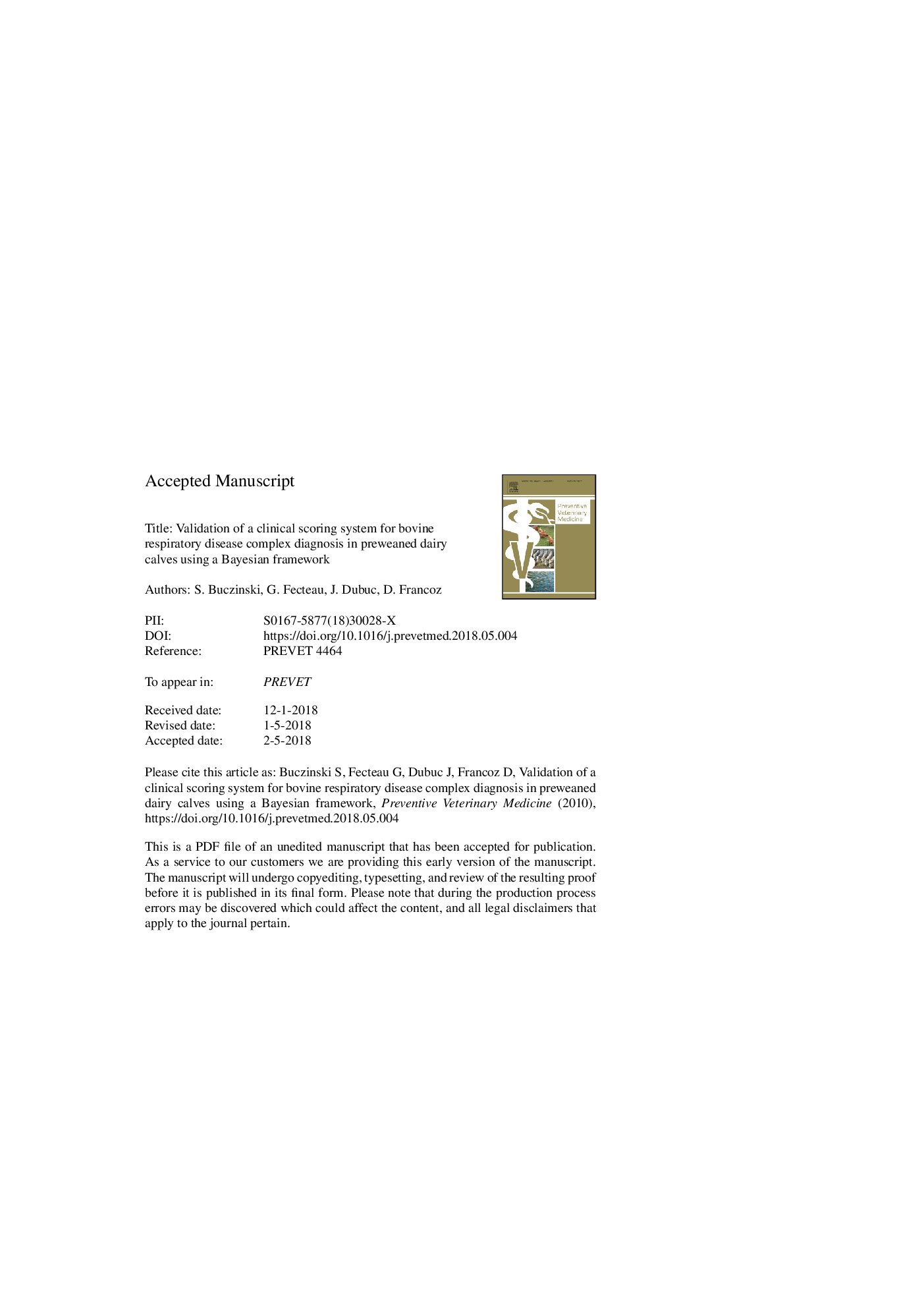| Article ID | Journal | Published Year | Pages | File Type |
|---|---|---|---|---|
| 8503405 | Preventive Veterinary Medicine | 2018 | 31 Pages |
Abstract
Bovine respiratory disease complex is a major cause of illness in dairy calves. The diagnosis of active infection of the lower respiratory tract is challenging on daily basis in the absence of accurate clinical signs. Clinical scoring systems such as the Californian scoring system, are appealing but were developed without considering the imperfection of reference standard tests used for case definition. This study used a Bayesian latent class model to update Californian prediction rules. The results of clinical examination and ultrasound findings of 608 preweaned dairy calves were used. A model accounting for imperfect accuracy of thoracic ultrasound examination was used to obtain updated weights for the clinical signs included in the Californian scoring system. There were 20 points (95% Bayesian credible intervals: 11-29) for abnormal breathing pattern, 16 points (95% BCI: 4-29) for ear drop/head tilt, 16 points (95% BCI: 9-25) for cough, 10 points (95% BCI: 3-18) for the presence of nasal discharge, 7 points (95% BCI: â1 to 8) for rectal temperature â¥39.2â¯Â°C, and â1 points (95% BCI: â9 to 8) for the presence of ocular discharge. The optimal cut-offs were determined using the misclassification cost-term term (MCT) approach with different possible scenarios of expected prevalence and different plausible ratio of false negative costs/false positive costs. The predicted probabilities of active infection of the lower respiratory tract were also obtained using posterior densities of the main logistic regression model. Depending on the context, cut-off varying from 9 to 16 can minimized the MCT. The optimal cut-off decreased when expected prevalence of disease and false negative/false positive ratio increased.
Related Topics
Life Sciences
Agricultural and Biological Sciences
Animal Science and Zoology
Authors
S. Buczinski, G. Fecteau, J. Dubuc, D. Francoz,
